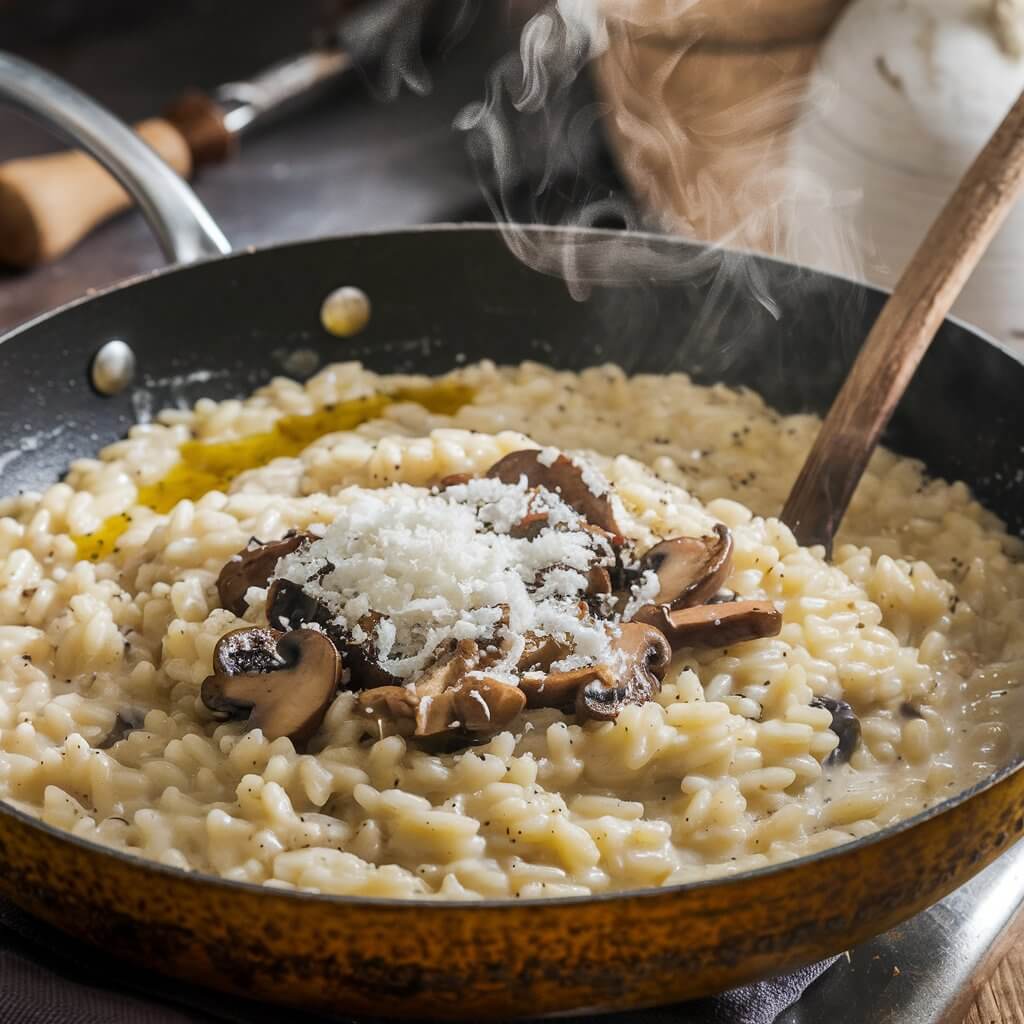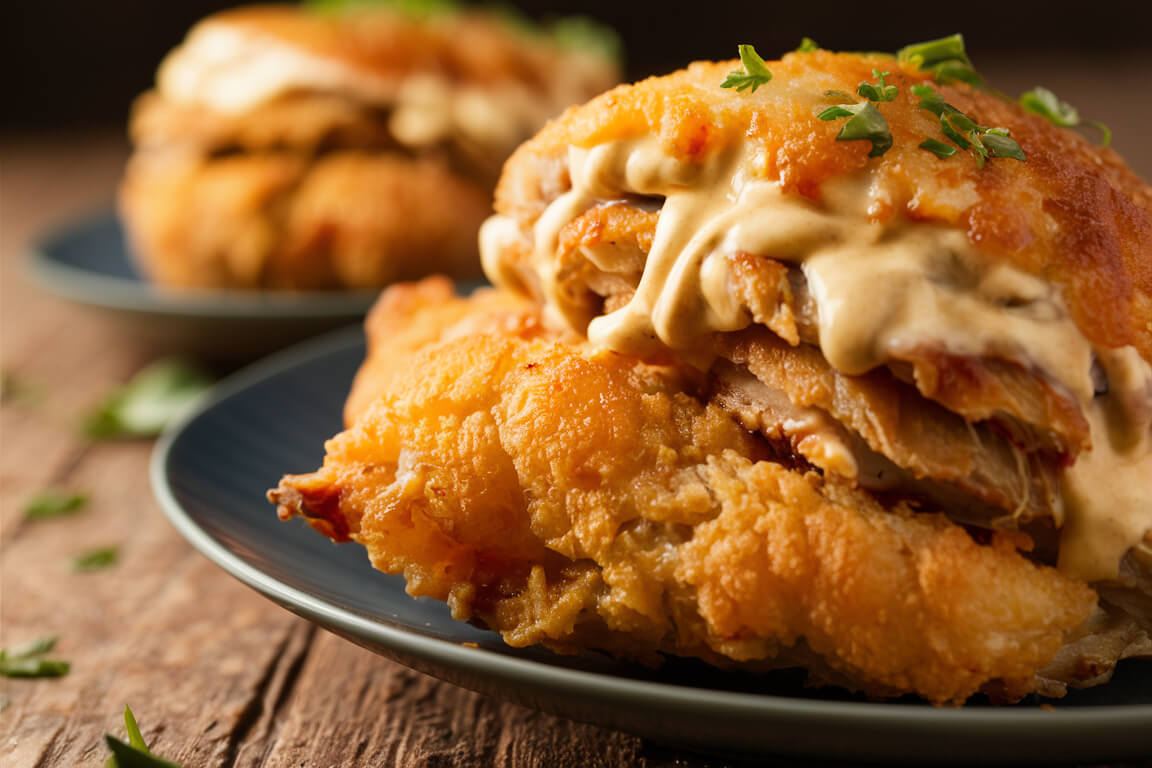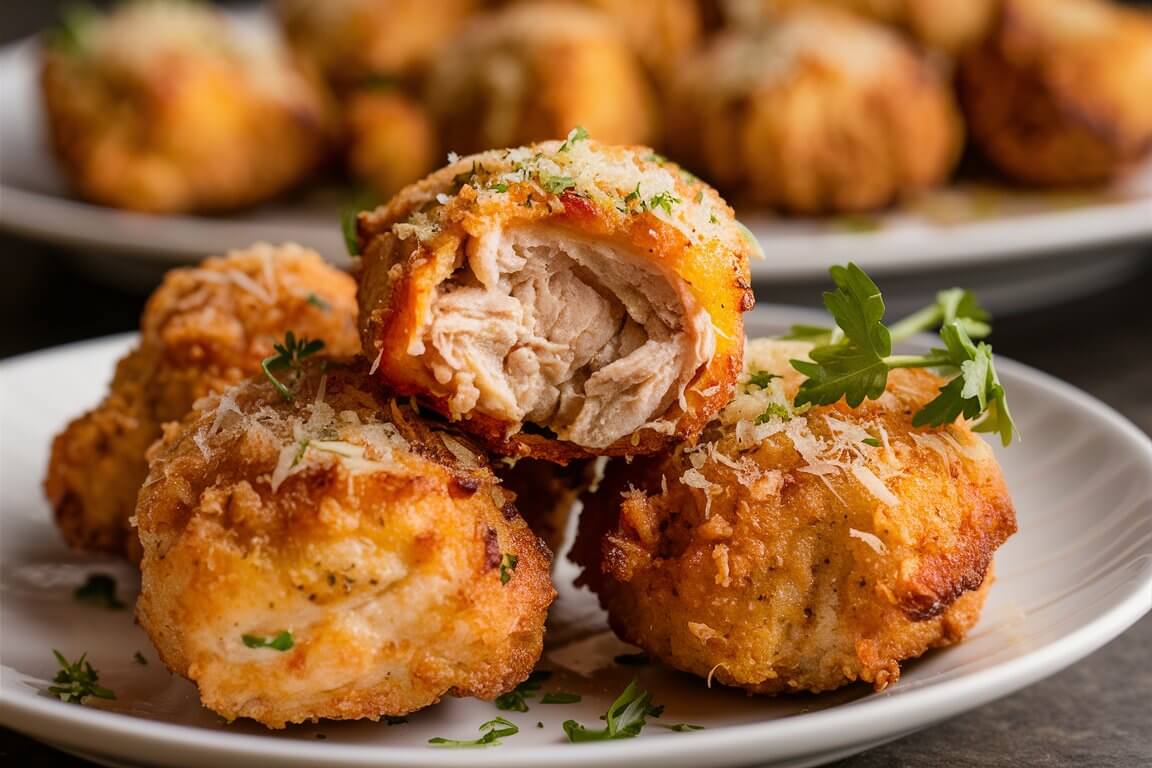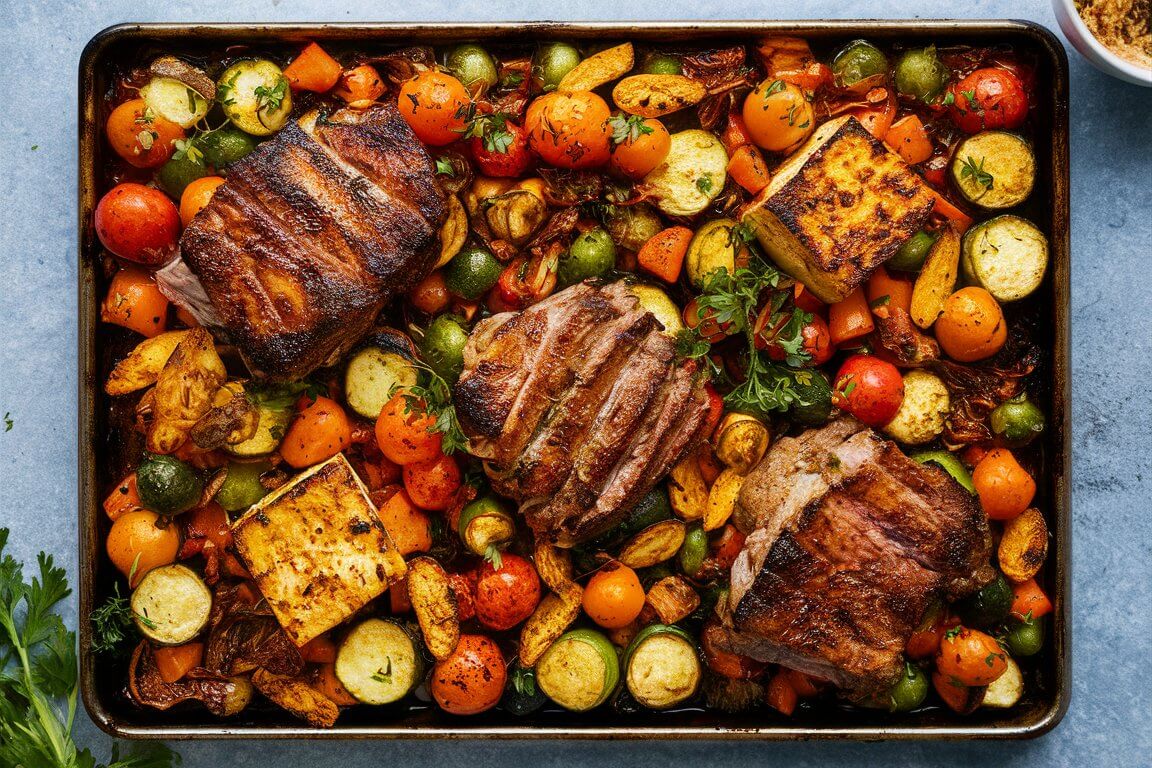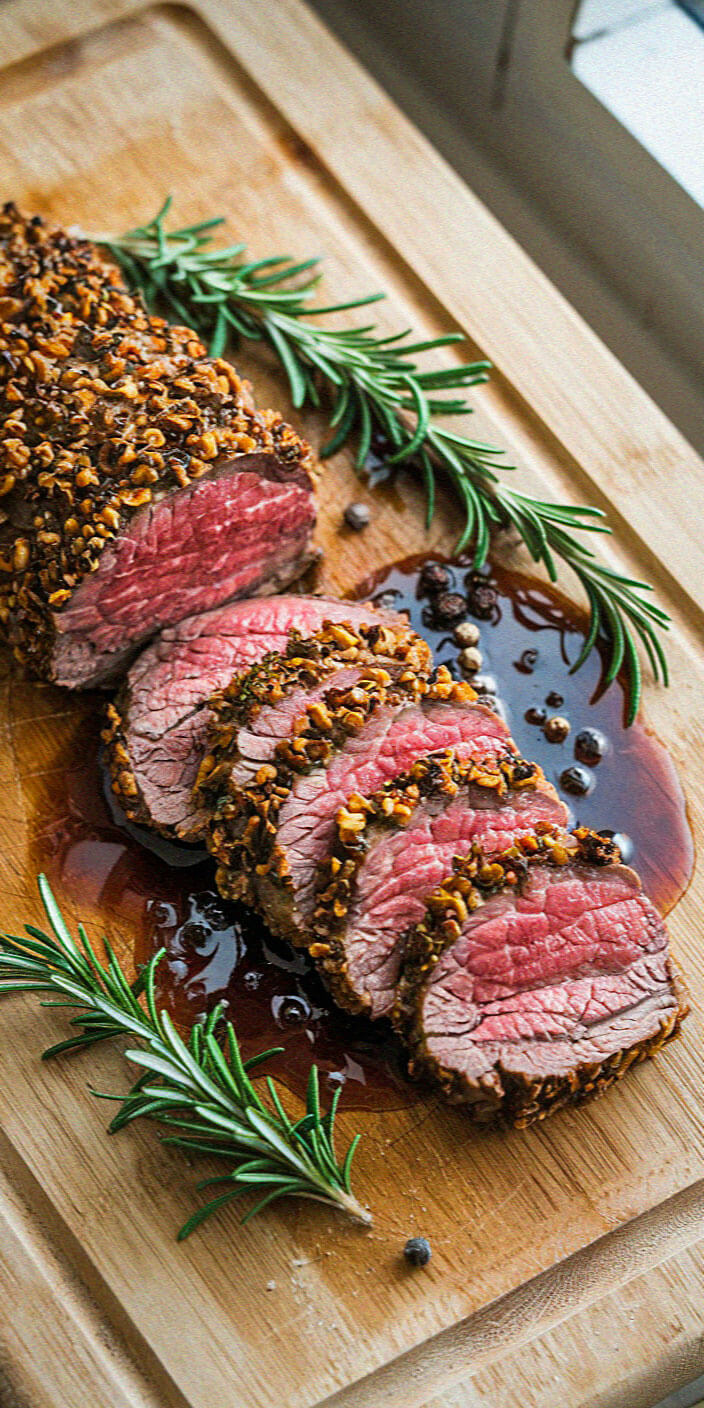
This website contains affiliate links. As an Amazon affiliate, I earn from qualifying purchases (What’s This?).
If there’s ever been a dish that embodies refined comfort, this is it. A porcini crusted beef tenderloin with red wine reduction is that perfect balance between earthy depth and elegant simplicity, the kind of meal that feels equally at home at a holiday dinner or a quiet evening for two.

In this guide, I’ll walk you through every step of creating this restaurant-worthy roast at home, from building that rich porcini and rosemary crust to mastering the silky red wine sauce that ties it all together.
Recipe Summary (Serves 4)
Ingredients:

- 1 whole beef tenderloin (about 2½–3 pounds)
- 1 cup dried porcini mushrooms
- 2 tablespoons fresh rosemary, finely chopped
- 1 teaspoon cracked peppercorns
- 1 teaspoon salt and pepper
- 2 tablespoons olive oil
- 1 cup port wine
- 1 cup red wine
- ½ cup beef stock
- 1 tablespoon butter
Instructions:

- Preheat oven to 400°F. Remove beef from refrigerator thirty minutes before roasting.
- In a spice grinder, grind dried porcini mushrooms, rosemary, and peppercorns to a coarse powder.
- Add salt and pepper to the tenderloin, then press the porcini rosemary rub over the surface.
- Get a wide skillet and heat up som olive oil with medium-high heat until shimmering. Sear the beef until brown on all sides.
- Get a roasting pan, transfer it over to roast it. It’s done if internal temperature reaches 130°F for medium rare.
- Meanwhile, make the red wine reduction: in a small saucepan, combine port and red wine, fresh rosemary sprigs, and stock. Heat the mixture over high heat until it reaches a rolling boil.
- Once boiling, let it simmer at medium heat. Continue simmering until the volume of liquid has decreased to about half of what you started with. So if you began with 2 cups of liquid, you’d cook it down to about 1 cup.
- Remove from heat, whisk in butter, and strain.
- Transfer tenderloin to a cutting board, let stand for 10–15 minutes, then slice and serve with sauce.
Tips for Success
- Always use a meat thermometer for accuracy.
- Let the beef rest before slicing for maximum juiciness.
- If you can’t find port, red wine may be substituted with additional port or a touch of balsamic for sweetness.
- Fresh rosemary and high-quality dried porcini mushrooms make the difference between good and unforgettable.
- Don’t skip the sear, it ensures a deep, savory flavor.
How Do Dried Porcini Mushrooms Elevate the Flavor?

Porcini mushrooms are the secret weapon here. Dried porcini have a concentrated flavor, nutty, earthy, and slightly smoky.
If you love the deep, earthy flavor of porcini, you might also enjoy our porcini mushroom velouté with truffle foam as an elegant starter course.
When ground into a fine powder, they create a natural umami coating that enhances the tenderloin without overpowering it.
You can make porcini powder easily at home by using any grinder that can be used to grind spices or coffee.
Pulse the dried porcini mushrooms until they form a coarse powder, then continue until it’s fine and aromatic.
This porcini powder is what forms the foundation of the crust, blending beautifully with fresh rosemary and cracked peppercorns to create a deeply flavorful rub.
What You’ll Need to Create the Perfect Crust

To get a crust that’s crispy, first, combine dried porcini mushrooms, rosemary, and black peppercorns in a grinder till everything becomes fragrant. Don’t over-grind until they are powdered.
Make sure some pieces are left to give better texture, not too fine. Add salt to balance the intensity. The crust acts as both a seasoning and a seal, keeping the tenderloin juicy and flavorful during roasting.
Before cooking, remember to remove beef from refrigerator at least thirty minutes before roasting. This helps it to be cooked with balance especially in the center.
Once you season the tenderloin with salt and pepper, gently press the porcini and rosemary crust onto the surface. It should cling naturally thanks to a light brushing of olive oil in a wide skillet before searing.
How to Prepare the Porcini Rosemary Rub
The porcini rosemary rub is simple but powerful. Combine porcini powder, crushed rosemary sprigs, and freshly cracked peppercorns in a spice grinder. You’ll want to grind until the mixture reaches a coarse powder consistency. This blend infuses the roast with a rich forest-like aroma that deepens as it cooks.
Rub it over the whole beef tenderloin generously. Use your hands to press it firmly so it adheres well. This step is what transforms an ordinary tenderloin roast into a porcini and rosemary crusted beef masterpiece.
What’s the Best Way to Sear the Beef Tenderloin?
To lock in flavor, sear the beef before roasting. Get a wide skillet, add olive oil and heat it at medium-high heat until shimmering.
Add the tenderloin and brown on all sides for about two minutes per side, this caramelizes the exterior and helps the crust adhere beautifully.
Once the beef and brown exterior have formed, transfer it to a roasting pan and let stand for a few minutes while you prepare the sauce. The aroma at this point, porcini mingling with rosemary and sizzling beef, is pure anticipation.
How to Make the Red Wine Reduction Sauce
A good beef tenderloin with red wine deserves an equally rich sauce. Begin by preparing a combination of port and red wine in a small saucepan.
Port adds a touch of sweetness that balances the savory flavors of the porcini crust. Add the red wine, a handful of fresh rosemary sprigs, and crushed peppercorns.
Boil it, then bring down the heat to medium level. Let it simmer until the sauce is reduced by half.
You can add tomatoes and wine for more depth or even a pat of butter near the end for a glossy finish.
If you’re out of port, red wine may be substituted with additional port or vice versa, both yield a velvety texture.
After you simmer the sauce until the liquid has decreased to the desired thickness (reduced), take the pan off the stove so it stops cooking (remove from heat).
Then get a fine-mesh strainer (or chinois), pour the sauce through it into another container to remove solids like rosemary sprigs, peppercorns, or any mushroom bits, leaving a smooth, clear sauce (strain). You’ll know it’s ready when it coats the back of a spoon.
What’s the Ideal Internal Temperature for Tenderloin?
A meat thermometer is your best friend here. For medium rare, aim for an internal temperature of about 130°F before resting. Always insert the thermometer into the thickest part of the tenderloin.
Once roasted, transfer to a cutting board and loosely tent with foil. Let stand for 10–15 minutes before slicing, this ensures those flavorful juices redistribute evenly.
When you remove beef from the oven, remember it will still cook slightly as it rests. The result? Juicy results and a crispy crust that’s perfectly tender inside.
What Makes Porcini Crusted Beef Tenderloin So Special?
Tenderloin is one of the most prized cuts of red meat, known for its buttery tenderness and mild flavor.
When paired with dried porcini mushrooms and rosemary, it transforms into something far more complex.
The porcini crust doesn’t just add flavor, it builds a savory, almost woodsy aroma that seeps into every bite.
This dish becomes an elegant dinner worthy of any holiday celebration, but it’s also surprisingly approachable once you know the steps.
Can This Dish Be Made Ahead of Time?
Very much so, and it’s ideal for entertaining. You can prepare the porcini rosemary rub a day in advance and keep it in an airtight jar. The tenderloin itself can be seasoned early in the day, allowing the porcini flavor to sink deeper into the meat.
If you’re making the red wine reduction ahead, simply prepare the sauce over medium heat until thickened, then store it in the fridge. When ready to serve, gently reheat in a saucepan over low heat and whisk in a touch of butter to refresh the sheen.
How to Serve Porcini Crusted Tenderloin with Red Wine Reduction
To serve, slice the roast beef into thick medallions and spoon the wine sauce generously over each piece. The contrast between the dark, mushroom-infused crust and the rosy, tender center is stunning. The rich sauce adds a touch of luxury without being heavy.
This dish goes well with roasted root vegetables, mashed potatoes, or creamy polenta. A side of sautéed mushrooms or garlicky green beans also complements the porcini’s earthy flavor.
For wine pairings, serve with a bold Cabernet Sauvignon or a red Bordeaux, both stand up well to the robust flavors of the meat and sauce.
What Are the Secrets to a Perfect Porcini Crusted Tenderloin?
The secret lies in balance. Too much porcini powder can overpower, while too little won’t give enough earthiness.
The rub should enhance, not mask, the flavor of the tenderloin. Always season with salt and pepper before applying the crust so the seasoning penetrates the meat itself.
Using fresh rosemary instead of dried makes a subtle but important difference. It keeps the crust aromatic rather than bitter. And when searing, don’t rush it, let the beef develop that caramelized exterior that adds so much depth.
Why This Dish Feels So Luxurious Yet Attainable
There’s something timeless about beef tenderloin, it feels like a celebration on its own. Adding a porcini and rosemary crust elevates it into something that feels restaurant-quality but entirely doable in your own kitchen.
The combination of textures, the crisp crust, the velvety sauce, the tender center, creates a sense of understated luxury.
Even the process feels special. Grinding dried porcini, searing in a wide skillet, and watching the sauce transform into a glossy reduction is the kind of slow, satisfying cooking that makes your kitchen smell incredible. It’s worth every minute.
The Joy of Cooking Something Beautiful
Cooking a porcini crusted tenderloin with red wine reduction isn’t about impressing guests (though it certainly will).
It’s about the sensory joy, the aroma of rosemary mingling with porcini mushrooms, the sizzle of beef in olive oil, and the deep, glossy wine sauce that makes every bite sing.
This dish has all the elements of a perfect meal: texture, balance, depth, and warmth. It’s roast beef elevated, a true celebration of simple ingredients treated with care. Serve it once, and it might just become your signature dish.
This website contains affiliate links. As an Amazon affiliate, I earn from qualifying purchases (What’s This?).
